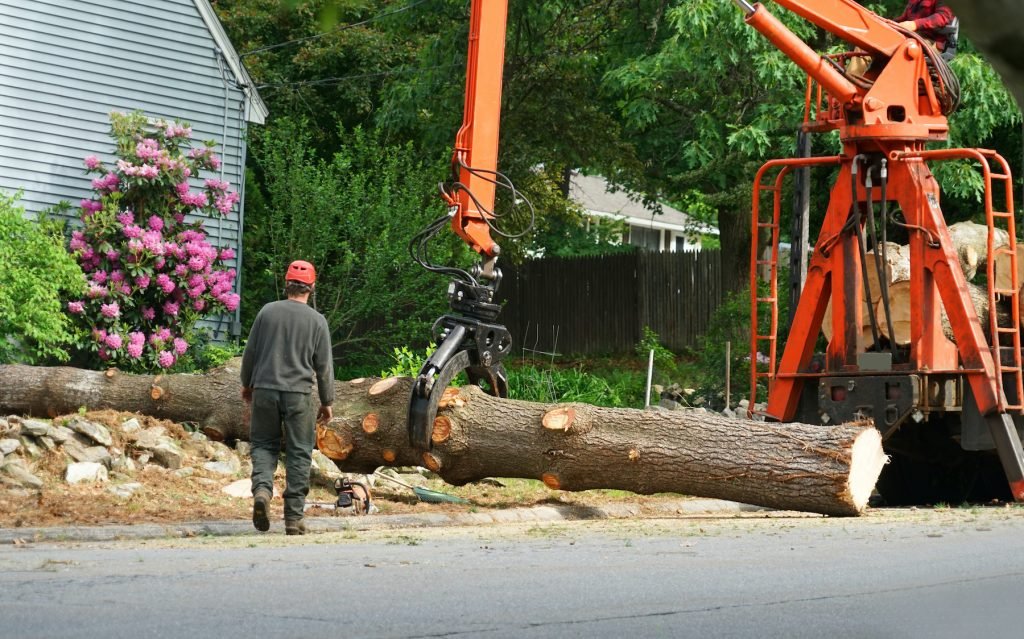
Have you ever looked at a dying or slanting tree in your yard and thought of attending to it another season? Delaying tree removal can end up costing you much more than you would ever save. Whether it’s structural damage or safety risks, waiting can turn a manageable job into a costly and dangerous one. The true cost of delays isn’t finances, but it’s about protecting your garden, your family, and the surrounding environment.
The Escalating Risk of Property Damage
A weak or dead tree is unpredictable. Branches snap or the whole tree can crash as a result of strong winds, excessive rain or even snow. In case of such occurrences, the destruction is devastating. It may break the roof, it may smash the fence or it may crush vehicles. As you wait longer, the weaker the tree get,s and the chances of collapsing are high.
Impact on Nearby Trees and Landscaping
Infected or dead trees are commonly associated with pests as well as fungi. When your landscape is hit with infestations like emerald ash borer or even fungus like oak wilt, the problem can easily spread to another tree and result in a domino effect. It is much more costly to replace multiple trees, shrubs, or flower beds, whereas it is cheap to remove a dangerous tree on time.
Hidden Structural Threats
Roots of a tree tend to move, grow unpredictably, or become invasive as they start dying or becoming weak. In the long term, this causes damage to underground pipes, foundations, driveways, and sidewalks. Even worse, when the roots weaken the earth, this can lead to eventual sinking or even slippage that impacts the structural integrity of your house. Early removal before the roots extend widely helps in avoiding big restoration costs.
Increased Liability and Legal Concerns
What could happen if a dangerous tree falls on a neighbor and damages his/her property or, even more, hurts a person? You may encounter serious legal and financial problems. Homeowner insurance could fail to cover damage when it is established that you were cognizant of the risk, which you did not correct. Property owners in most municipalities are legally bound to ensure safe conditions, which involve the removal of dangerous trees. Not only is a lawsuit or uncovered claim potentially much more expensive than the on-time tree removal services, it can also be a nightmare.
Rising Removal Costs Over Time
The cost of removing trees is determined by height, location, and physical condition. Ironically, the longer you wait the more difficult and expensive the service becomes. If a tree is unstable, it can need specialized gear such as cranes or extra manpower. In the case it is near power lines or too close to your house, the complexity of the job may make the prices soar high.
Pest Infestation and Home Invasion
Dying trees become habitats to insects like termites, carpenter ants, and beetles.These pests can move to your home where they damage wooden furniture and electrical wiring. Decaying trees also shelter squirrels or raccoons which make their way to attics or basements.
Lower Property Value and Curb Appeal
A well-cared, good-looking landscape will add value to your home. Broken branches or unsafe trees, on the other hand, will only decrease the property’s value. The number of potential buyers would consider a dead or leaning tree a hefty problem they will have to rectify, and thus they would give a low price or avoid it altogether.
Potential Interference with Utilities
An electrical failure caused by a fallen tree branch may not only cost you a lack of power but also the power of the entire neighborhood. In most situations, utility companies may hire pros to handle the work, but the costs incurred are paid by the property owner.
Compromised Safety for People and Pets
A decaying tree is unpredictable. A branch can just fall out and pose a danger to whoever is in the vicinity. The longer you wait the more likely you are to have an accident that otherwise could have been avoided.
The Environmental Factor
Although cutting down a tree might appear as environmental loss, any attempt at leaving a diseased or dying tree could be ecologically detrimental to local systems. This early intervention in the removal of the infected tree conserves healthy vegetation and will render a balanced local habitat.
The “Out of Sight, Out of Mind” Trap
The problem does not appear to be urgent until it is. This is one of the most common excuses that homeowners use when they don’t remove harmful trees. Signs of danger are usually ignored until one tree suffers a sudden breakdown, which requires urgent measures. Sadly enough, emergency removals are more expensive and risky.
Planning for Replacement
By cutting down a troublesome tree early, you can consider carefully what to replace it with. Whether you pick a flowering ornamental, shade tree, or native species that helps local wildlife, planting sooner, rather than later, will guarantee your landscape recovers faster. Waiting to remove also means waiting to replace– and you may have years to wait before your yard regains its beauty.
The Cost of Waiting vs. Acting Now
Let us put it into perspective: investing in prompt professional tree removal will bolster your property’s architecture in terms of safety, value, and image. Otherwise, there is increased cost of removals, repair expenses, attorney services, extermination fees, and emotional trauma of having to deal with accidents that could be avoided. In the long run, prompt action is not just the cheaper option — it’s the smarter one.
Conclusion
Delaying the removal of trees will result in higher costs due to property damage, pest infestations, legal implications, and increased accident risks. Be alert to symptoms such as angled trunks, deformed branches, or decay. Be preemptive and deal with the matter before it gets worse. To maximize the removal process, the safe, cost-efficient way of removing trees relies on NYC discount tree experts to provide you with an accurate, safe, and affordable service.

